Best Seventies Adventure
By:
November 3, 2013
NOTE: This post has been superseded by HILOBROW’s 100 Best Adventures of the Seventies page.
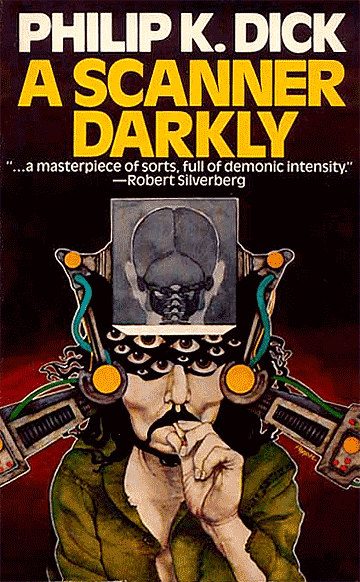
The Best Adventure series of posts will list my favorite 21 adventure novels from each of the 20th Century’s first eight (socio-cultural) decades. Plus, I kicked off the series with a list of the Top 32 adventures from the 19th Century; in total, then, I aim to list 200 of my all-time favorite adventures.
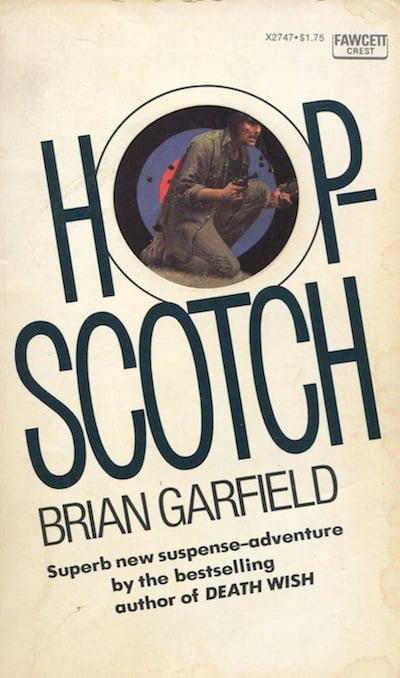
JOSH GLENN’S *BEST ADVENTURES* LISTS: BEST 250 ADVENTURES OF THE 20TH CENTURY | 100 BEST OUGHTS ADVENTURES | 100 BEST RADIUM AGE (PROTO-)SCI-FI ADVENTURES | 100 BEST TEENS ADVENTURES | 100 BEST TWENTIES ADVENTURES | 100 BEST THIRTIES ADVENTURES | 75 BEST GOLDEN AGE SCI-FI ADVENTURES | 100 BEST FORTIES ADVENTURES | 100 BEST FIFTIES ADVENTURES | 100 BEST SIXTIES ADVENTURES | 75 BEST NEW WAVE SCI FI ADVENTURES | 100 BEST SEVENTIES ADVENTURES | 100 BEST EIGHTIES ADVENTURES | 75 BEST DIAMOND AGE SCI-FI ADVENTURES | 100 BEST NINETIES ADVENTURES (in progress) | 1994 | 1995 | 1996 | 1997 | 1998 | 1999 | 2000 | 2001 | 2002 | 2003 | NOTES ON 21st-CENTURY ADVENTURES.
20 ADVENTURE THEMES AND MEMES: Index to All Adventure Lists | Introduction to Adventure Themes & Memes Series | Index to Entire Series | The Robinsonade (theme: DIY) | The Robinsonade (theme: Un-Alienated Work) | The Robinsonade (theme: Cozy Catastrophe) | The Argonautica (theme: All for One, One for All) | The Argonautica (theme: Crackerjacks) | The Argonautica (theme: Argonaut Folly) | The Argonautica (theme: Beautiful Losers) | The Treasure Hunt | The Frontier Epic | The Picaresque | The Avenger Drama (theme: Secret Identity) | The Avenger Drama (theme: Self-Liberation) | The Avenger Drama (theme: Reluctant Bad-Ass) | The Atavistic Epic | The Hide-And-Go-Seek Game (theme: Artful Dodger) | The Hide-And-Go-Seek Game (theme: Conspiracy Theory) | The Hide-And-Go-Seek Game (theme: Apophenia) | The Survival Epic | The Ruritanian Fantasy | The Escapade
This is the ninth post in the series. Here you’ll find a list of my Top 21 Adventures from the Seventies (1974–1983).
ALSO SEE: 75 Best New Wave Sci-Fi (1964–1983) Novels
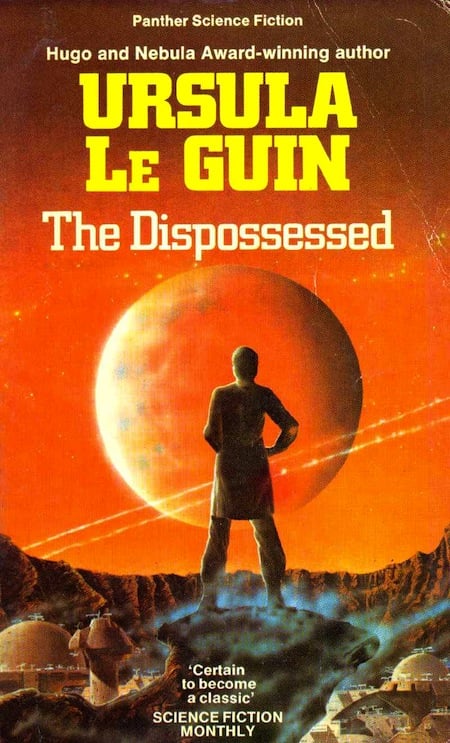
This is the era of the mega-bestselling thriller, the fat airport novel with the embossed cover. I will mostly ignore these…
If adventure novels in the Sixties troubled their readers’ faith in fixed, universal categories, and in certainty, Seventies adventure replaced these relics with difference, process, anomaly. The science fiction of the era — Ursula K. LeGuin’s The Dispossessed, Samuel R. Delany’s Trouble on Triton, Philip K. Dick’s A Scanner Darkly, Christopher Priest’s Inverted World, Olivia E. Butler’s Kindred and Wild Seed — was as far-out as it gets, the final flourish of New Wave before the advent of cyberpunk. All binary oppositions (past/present, liberal/conservative, innocent/guilty, utopian/anti-utopian) are overthrown. Ambivalence, indeterminacy, and the irreducible undecidability of things: In Seventies adventures, these are the anti-anti-utopian new normal.
Postmodernist adventure first began to flourish in the late Fifties (1954–1963), although it was invented earlier than that by Flann O’Brien. The trend reached its apex in the late Sixties (1964–1973). In the Seventies, postmodern lit rallies for a last hurrah. Several great Seventies adventures foreground the eclecticism and hybridity lurking beneath the illusion of conceptual unity and institutional integrity. In Gilbert Sorrentino’s Mulligan Stew, Umberto Eco’s The Name of the Rose, Philip K. Dick’s VALIS, Samuel R. Delany’s Dhalgren, Alasdair Gray’s Lanark, Ishmael Reed’s Flight to Canada, Italo Calvino’s If on a Winter’s Night a Traveler, and John Crowley’s Little, Big, we discover, e.g., the author as character; plots which are self-contradicting or which blur reality and fiction; form and language being disrupted or played with; and fiction that overtly references other fictional works.
PS: Although postmodernist literature would still be produced in the Eighties and Nineties, with few exceptions it would no longer be funny. Unfunny postmodernism… why bother?
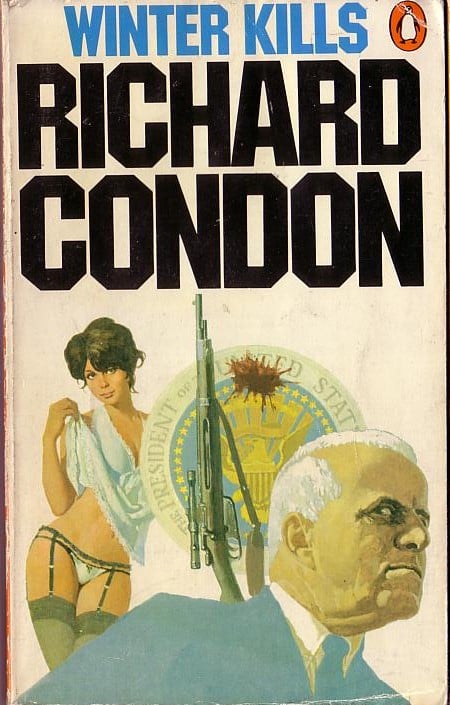
Even non-sf, non-postmodernist adventure novels of the Seventies — Robert Stone’s Dog Soldiers, William Goldman’s Marathon Man, Richard Condon’s Winter Kills, James Grady’s Six Days of the Condor, John le Carré’s Tinker Tailor Soldier Spy, Edward Abbey’s The Monkey Wrench Gang, Paul Theroux’s The Mosquito Coast, Brian Garfield’s Hopscotch, Richard Condon’s Prizzi’s Honor — express the sense that something’s gone awry with the technologically advanced, prosperous, contented, triumphalist liberal democracy that is postwar America. In the Seventies, even the bad guys were dissatisfied.
During the Seventies, adventure becomes more and more absurdist (Terry Pratchett’s The Colour of Magic, Erica Jong’s Fanny, T. Coraghessan Boyle’s Water Music, Gregory Mcdonald’s Fletch, Thomas Berger’s Who Is Teddy Villanova?), and at the same time more apocalyptic (Alan Moore’s V for Vendetta, Larry Niven and Jerry Pournelle’s Lucifer’s Hammer, Russell Hoban’s Riddley Walker). In a few sublime cases — J.G. Ballard’s Concrete Island, High-Rise, and Hello America; Gary Panter’s Jimbo; Douglas Adams’s The Hitchhiker’s Guide to the Galaxy — Seventies adventure strikes the perfect balance of absurdist and apocalyptic.
A note, finally, about YA adventures of this period. I do enjoy quite of bit of Seventies YA lit — it’s what I grew up reading, after all. Ellen Raskin’s The Tattooed Potato and The Westing Game are good fun; so are Peter Dickinson’s The Blue Hawk, Joan Aiken’s Midnight is a Place, Katherine Paterson’s The Master Puppeteer, Elizabeth George Speare’s The Sign of the Beaver, Robin McKinley’s The Blue Sword, and everything by Susan Cooper and Daniel Pinkwater. However… YA fiction gets exceedingly dark (“realistic”) in the Seventies.
When I was an adolescent, I couldn’t get enough of the apocalyptic YA that Scholastic Books peddled via their catalog, but re-reading it now — Robert O’Brien’s Z for Zachariah, O.T. Nelson’s The Girl Who Owned a City, Ben Bova’s City of Darkness, Ian Macmillan’s Blakely’s Ark — I find it terrifying and twisted. William Sleator’s House of Stairs is about torture and mind-fucking; Robert Cormier’s The Chocolate War is about bullying; Katherine Paterson’s Bridge to Terabithia is way too sad; Madeleine L’Engle’s A Swiftly Tilting Planet is about nuclear war; Monica Hughes’s The Keeper of the Isis Light has a tragic ending. I’m not even happy about Tintin and Asterix comics from 1974–1983.
Note to parents: Of course I’m not suggesting that you should forbid your children from reading YA lit from the Seventies! However, in my own household, I have endeavored to introduce thrilling YA from the Twenties (e.g., Emil and the Detectives, Swallows and Amazons), Thirties (The Sword in the Stone, early Tintin), Forties (Stuart Little, The Fabulous Flight), Fifties (A Wrinkle in Time, The Eagle of the Ninth; Lord of the Flies is a book about children for adults which foreshadows YA lit of the Seventies), and Sixties (Harriet the Spy, Mrs. Frisby and the Rats of NIMH) before introducing thrilling, but also twisted and despairing, YA classics from the Seventies. FWIW.
As in each post from this series, I’ve appended a list of 29 second-tier favorites — for a grand total of 50 Top Adventures of the Seventies. Plus a third-tier list that features, among other thing, many obscure adventures. These ought not to be thought of as “third-rate” (I wouldn’t mention them if they weren’t worth reading) but instead as Most Deserving of Rediscovery. Please leave suggestions and feedback.
PS: I wrote this entry here in Boston, Mass., during the 2013 World Series. Please excuse typos and screw-ups.
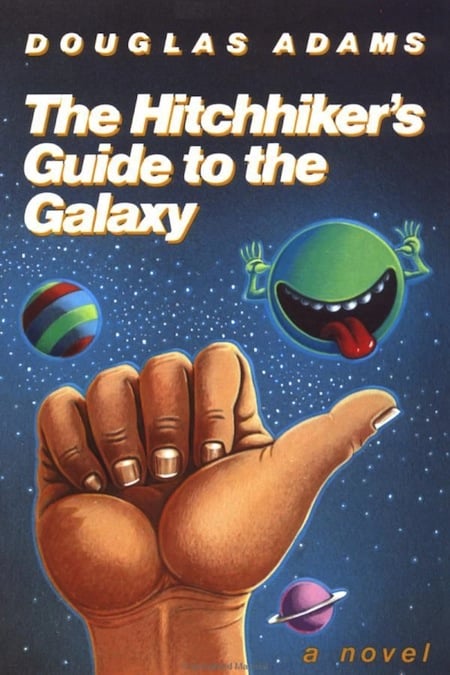
If you’re interested in reading re-discovered science fiction adventures, check out the 10 titles from HiLoBooks — available online and in gorgeous paperback form. .
In chronological order:
- 1974. Robert Stone’s crime adventure Dog Soldiers. Set in Vietnam and the United States, it concerns a heroin deal that goes violently awry. Its theme, meanwhile, is the decline of the promise of the Sixties: the death of the counterculture in America, mistrust of authority figures, and the end of youthful American optimism. Published in the cusp year of 1974, Stone’s book signals the emerging tone of Seventies-era adventure.
- 1974. John le Carré’s espionage adventure Tinker Tailor Soldier Spy. George Smiley — the pudgy, cuckolded, anti-James Bond — is recalled to the British Secret Intelligence Service to hunt down a double agent… one of his own ex-colleagues. After The Spy Who Came in from the Cold, this is the second-best novel by the author… who worked for MI5 and MI6 in the ’50s and ’60s, when Kim Philby was exposed as a KGB mole. The 2011 movie version, starring Gary Oldman, was pretty good; so was the the 1979 miniseries with Alec Guinness.
- 1974. Ursula K. LeGuin’s anarchistic science fiction adventure The Dispossessed: An Ambiguous Utopia, a pointed critique of typical utopian narratives. It’s set on Annares, a planet whose inhabitants value voluntary cooperation, local control, and mutual tolerance — but who have preserved their grooviness through an entrenched bureaucracy that stifles innovation. Le Guin’s protagonist temporarily abandons Annares for a nearby world, one that is superior in certain respects because its inhabitants value the free market. How to reconcile?
- 1975. J.G. Ballard’s atavistic adventure High-Rise. An ultra-modern apartment block in London populated by well-to-do yuppies who rarely leave the premises gradually becomes a self-sustaining vertical city. At which point social relations between different groups of tenants worsen; they stratify into three castes — depending on which floor you live on. A new social order emerges, one in which “all life within the high-rise revolved around three obsessions — security, food and sex.” Sardonic inversion of the atavistic sub-genre.
- 1975. Len Deighton’s espionage adventure Yesterday’s Spy. Thirty years after WWII, Steve Champion, hero and wily leader of an anti-Nazi intelligence group which operated in occupied France during the war, is up to something. His former second-in-command, the novel’s unnamed narrator, is tasked with the unenviable job of figuring out what it is.
- 1975. Jack Higgins’s WWII commando adventure The Eagle Has Landed. An IRA operative and team of disgraced — because they’re too kind-hearted, and anti-Nazi — German commandos are recruited to infiltrate an English village, where Winston Churchill is going to spend a weekend. Their objective is to kidnap him and smuggle him out of the country. Adapted in 1976 as a movie starring Michael Caine, Donald Sutherland, and Robert Duvall.
- 1975. Edward Abbey’s anarchistic adventure The Monkey Wrench Gang. Four ecologically minded misfits team up to use sabotage (bulldozers and trains) as way of protesting environmentally damaging activities in the American Southwest. The Monkeywrench Gang despise liberals — particularly the Sierra Club. The book, which is very funny and exciting, inspired the formation of the direct-action environmentalist group Earth First!
- 1976. Samuel R. Delany’s Foucauldian science fiction adventure Trouble on Triton: An Ambiguous Heterotopia. A post-structuralist novel set on a Neptunian colony where no one goes hungry and everyone is sexually confused. The subtitle signal’s the author’s critique not only of utopian narratives but of Le Guin’s vestigial nostalgia for pastoral communes. Political tensions between Triton — where one can change one’s physical appearance, gender, sexual orientation, and even specific patterns of likes and dislikes — and Earth lead to a destructive interplanetary war.
- 1977. Philip K. Dick’s science fiction adventure A Scanner Darkly. Set in a barely futuristic suburban LA of 1994, Scanner tells the story of “Fred,” a disillusioned narc who enjoys the company of the addicts with whom he lives as “Bob” — whose own drug intake contributes to a toxic brain psychosis complicated by Fred’s new assignment… to spy on Bob. The book ends with a dramatic dedication to Dick’s many friends who’d been killed or permanently damaged by drug abuse; the author’s own name is on the list.
- 1977–on. Gary Panter’s comic Jimbo. Panter’s “ratty line” illustrations helped define the style of L.A. punk. But the appeal of Jimbo — an all-American, freckle-faced punk wandering through a post-apocalyptic social order on Mars known as Dal Tokyo — is timeless. The first Jimbo comics appeared in the zine Slash and in Spiegelman/Mouly’s Raw; they have been collected in Jimbo (1982), Invasion of the Elvis Zombies (1984), Jimbo: Adventures in Paradise (1988), and Jimbo’s Inferno (2006). Panter is still producing Jimbo adventures today!
- 1979. Gilbert Sorrentino’s meta-fictional adventure Mulligan Stew. On loan from Fitzgerald, O’Brien, Joyce, and Hammett, the characters in a “new wave murder mystery” rebel against its author. The book turns into an improvised soup of journal entries, erotic poetry, parodies of all kinds, love letters, interviews, lists, and — above all — intentionally bad writing, from incoherent ideas to clichés to stupid metaphors.
- 1980. Geoffrey Household’s occult adventure The Sending. When Hollaston, an ex-Indian Army colonel, inherits a dead friend’s polecat, he discovers that he has suppressed shamanistic powers… and what’s more, he’s being targeted — via psychic transmissions — by a cult! Four decades after Rogue Male, another great yarn from the great Household.
- 1980. Octavia E. Butler’s Patternist science fiction adventure Wild Seed. Anyanwu, a 350-year-old shapeshifter who can absorb bullets and heal with a kiss, is lured from an African jungle to the colonies of America by the ruthless Doro, an immortal entity who changes bodies like clothes — and who wants to use Anyanwu for his breeding experiments. The history of slavery, recapitulated as alien abduction! The prequel to Mind of My Mind (1977), Clay’s Ark (1984), Survivor (1978), and Patternmaster (1976).
- 1980. Umberto Eco’s historical/hermeneutic adventure The Name of the Rose, set in the early 14th century. As the Sherlock Holmes-like Franciscan friar William of Baskerville (get it?) arrives at a Benedictine monastery in Italy, several monks die under mysterious circumstances. William and his novice, Adso, explore a labyrinthine medieval library containing forbidden literature, discuss the subversive power of laughter, and confront the intolerance of the Inquisition… but is there a mystery to be discovered, after all?
- 1981. Jean-Patrick Manchette’s “neo-polar” crime adventure The Prone Gunman. Martin Terrier, a young hitman eager to retire, returns to his home town. There, he loses the woman he loves, the money he’s saved, the one friend he has left, and finally, his marksmanship. A violent, existentialist exploration of the human condition and French society; the author’s last completed novel. French cartoonist Jacques Tardi’s adaptation of The Prone Gunman is great; check out Fantagraphics Books’ 2011 English-language edition.
- 1981. Alasdair Gray’s postmodernist fantasy adventure Lanark. In two of this epic tome’s four sections, a young Glaswegian is driven mad by his inability to form relationships; in the other two sections, Unthank — a Glasgow-like fantasy civilization — disintegrates for the same reason. Are the two narratives connected? Perhaps, perhaps not. In the Epilogue, the author himself tells the protagonist: “A heavy book will make a bigger splash than two light ones.”
- 1981. John Crowley’s fantasy adventure Little, Big. The complex, sprawling, quasi-mythic story of an eccentric family’s relationship with the occluded world of faerie. The family’s members believe that they are each part of a grand supernatural Tale, and that their fates are intertwined with the faeries’ hidden universe. According to Harold Bloom: “A neglected masterpiece. The closest achievement we have to the Alice stories of Lewis Carroll.”
- 1981. Paul Theroux’s The Mosquito Coast. A sardonic inversion of a cozy-catastrophe-type Robinsonade The patriarch of a would-be Swiss Family Robinson tells his family that civilization has been destroyed — although it hasn’t. Before that, he tries to bring an ice machine to the natives of a Central American jungle village; so it’s also a sardonic inversion of a frontier epic.
- 1982. Alan Moore’s graphic novel adventure V for Vendetta, set in a near-future United Kingdom, ruled by the fascist Norsefire Party, which came to power after a nuclear war. An anarchist revolutionary, who wears a Guy Fawkes mask and calls himself “V,” begins a campaign of terrorism designed to bring down the government — and revenge himself on the scientists whose experiments led him to develop superhuman abilities. Illustrated mostly by David Lloyd.
- 1982. T. Coraghessan Boyle’s semi-fictional historical adventure Water Music, which follows the parallel adventures of Scottish explorer Mungo Park and a London criminal, Ned Park, in 19th-century London, Africa, and the Scottish highlands. A riotous, erudite, imaginative yarn loosely based on the real-life Mungo Park’s Travels in the Interior Districts of Africa. The author’s first novel.
- 1983. Terry Pratchett’s comical fantasy adventure The Colour of Magic, the first book of the Discworld series. Caught up in a boardgame played by the gods of Discworld, the incompetent wizard Rincewind journeys across the Disc with wealthy tourist Twoflower. A sardonic inversion of fantasy; Pratchett has described the book as “an attempt to do for the classical fantasy universe what Blazing Saddles did for Westerns.”
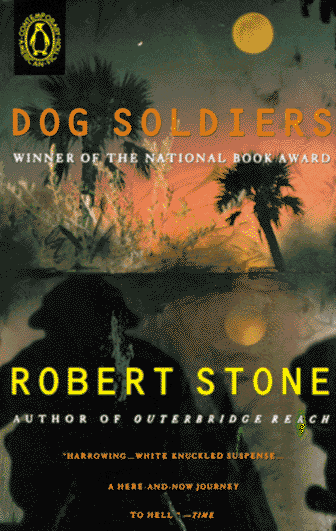
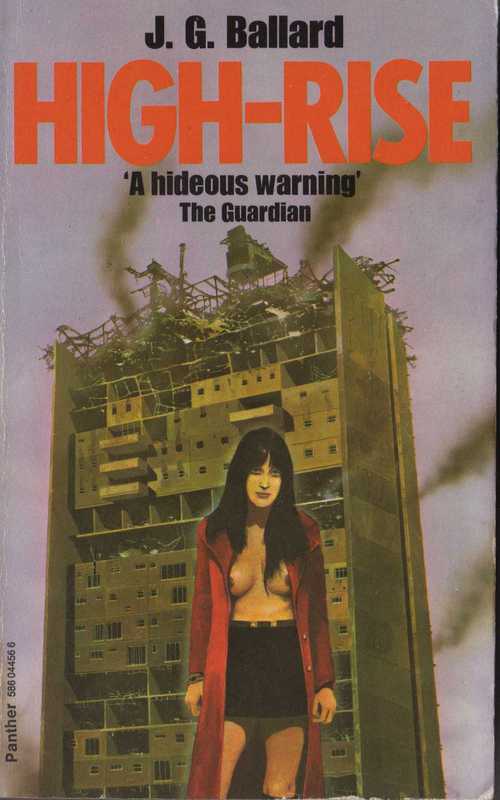
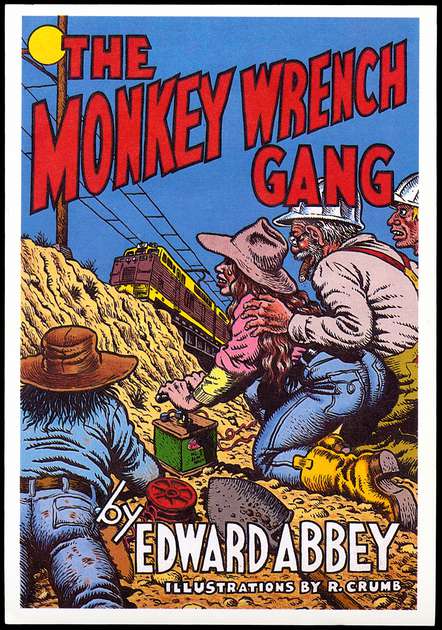
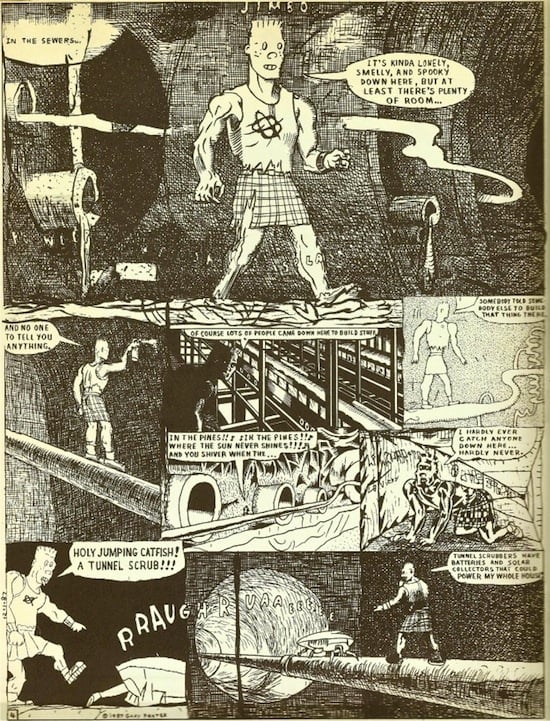
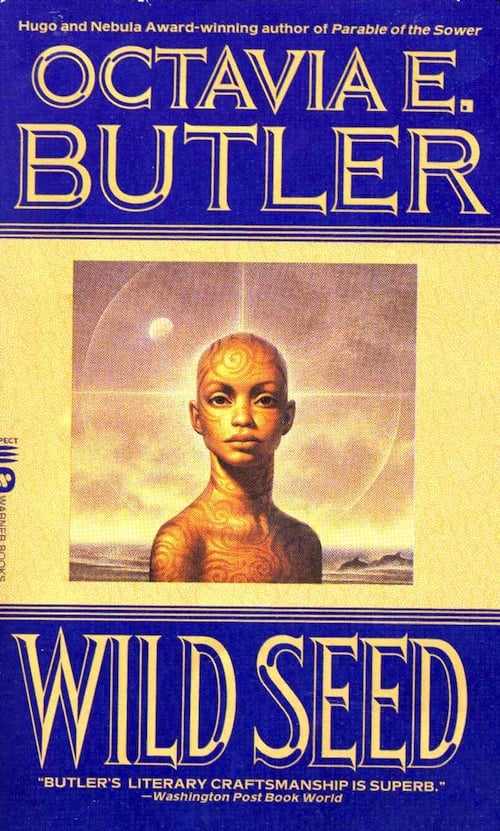
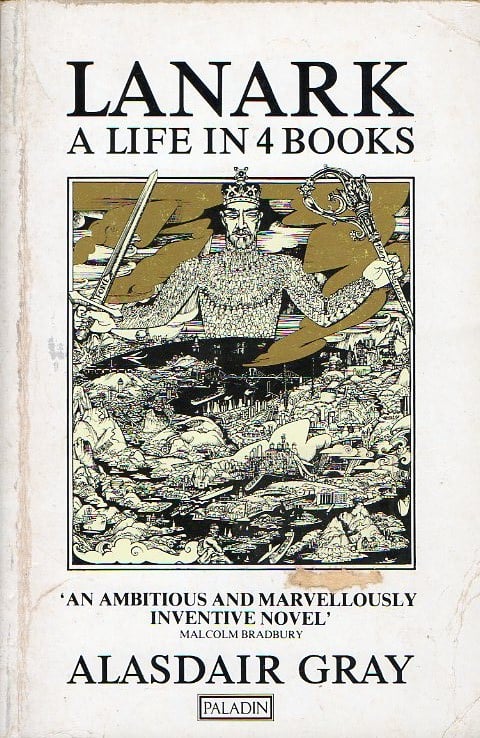
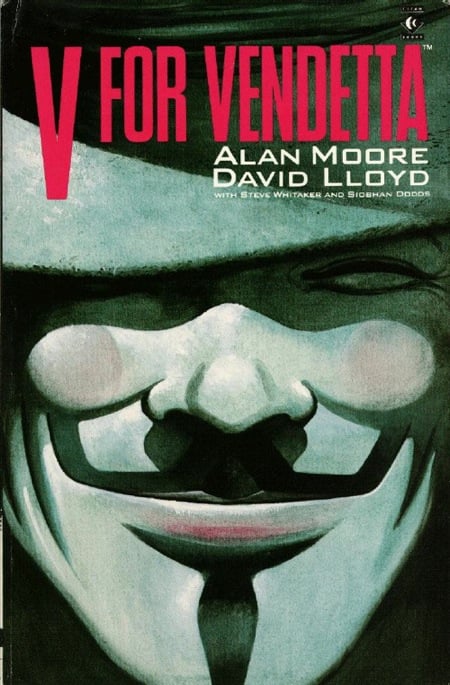
Thanks! To the nearly 400 adventure fans who kickstarted the SAVE THE ADVENTURE e-book club.
- 1974. William Goldman’s hunted-man adventure Marathon Man.
- 1974. Frederick Forsyth’s war adventure The Dogs of War.
- 1974. Richard Condon’s black-comedy political thriller Winter Kills. The novel parallels the real life assassination of John F. Kennedy and the various conspiracy theories that surround the event. Adapted into a 1979 film.
- 1974. James Grady’s hunted-man adventure Six Days of the Condor — upon which the 1975 Robert Redford movie Three Days of the Condor is based — sees a nerdy CIA analyst (he specializes in reading thrillers and mysteries) use his knowledge to survive the attacks of trained assassins and rogue CIA agents.
- 1974. Donald E. Westlake’s crime adventure Jimmy the Kid.
- 1974. Christopher Priest’s science fiction adventure Inverted World.
- 1974. J.G. Ballard’s science fiction adventure Concrete Island. A satirical Robinsonade set on an “island” in the middle of a super-highway.
- 1975. Michael Crichton’s crime adventure The Great Train Robbery. A fictionalized account of actual historic events, the robbery of an English train in 1855.
- 1975. SE Hinton’s YA adventure Rumble Fish.
- 1975. Brian Garfield’s Hopscotch. By the author of the Death Wish atavistic vigilante adventures. An American intelligence operative decides to pit himself against former friends and foes alike. The author’s best novel. Adapted into the 1980 Walter Matthau movie of the same title.
- 1975. Samuel R. Delany’s science fiction adventure Dhalgren.
- 1975. Joanna Russ’s science fiction adventure The Female Man. An underground classic. Multiple heroines from different times.
- 1976. Don DeLillo’s Ratner’s Star. A surrealistic work about young mathematics whiz charged with decoding a message from a distant star.
- 1976. Ishmael Reed’s historical adventure Flight to Canada. A sardonic inversion of slave narratives and earnest abolitionist novels.
- 1976. J.P. Donleavy’s The Destinies of Darcy Dancer. Sardonic inversion of a picaresque, set in Ireland.
- 1976–79. Moebius’s science fiction graphic novel The Airtight Garage.
- 1977. Larry Niven and Jerry Pournelle’s science fiction adventure Lucifer’s Hammer. A cozy catastrophe.
- 1977. Michael Moorcock’s Jerry Cornelius adventure The Condition of Muzak. The fourth in the author’s Jerry Cornelius Quartet.
- 1978. J.G. Farrell’s The Singapore Grip. Relates the events following Japan’s entry into the Second World War by invading South East Asia and swiftly occupying Singapore. It is the third installment in Farrell’s Empire Trilogy.
- 1978. Ken Follett’s WWII espionage adventure The Eye of the Needle.
- 1979. Octavia E. Butler’s fantasy/historical adventure Kindred. A contemporary African American woman is transported to antebellum Maryland.
- 1979. Daniel Pinkwater’s YA adventure Alan Mendelsohn, The Boy from Mars. It has fantasy and sf aspects, but I’m going to categorize Pinkwater’s very funny book as a survivalist adventure — because it’s about surviving adolescence.
- 1979. Douglas Adams’s absurdist science fiction adventure The Hitchhiker’s Guide to the Galaxy.
- 1979. Italo Calvino’s meta-fictional adventure If on a Winter’s Night a Traveler. The narrative is about a reader trying to read a book called If on a Winter’s Night a Traveler.
- 1980. Erica Jong’s satirical historical adventure Fanny. A sardonic inversion of the picaresque.
- 1980. Russell Hoban’s science fiction adventure Riddley Walker.
- 1980. Robert Ludlum’s espionage adventure The Bourne Identity.
- 1981. Philip K. Dick’s science fiction adventure VALIS.
- 1982. Richard Condon’s crime adventure Prizzi’s Honor. A black comedy in which a mob hitman falls in love with his contract — also a hired killer.
- 1974. Susan Cooper’s Dark is Rising YA fantasy adventure Greenwitch. The third in a series of five.
- 1974. Michael Moorcock’s Elric fantasy adventure The Sailor on the Seas of Fate.
- 1974. Charles McCarry’s political thriller The Tears of Autumn.
- 1974. George Markstein’s thriller The Cooler.
- 1974. Cormac McCarthy’s Child of God, about a backwoods murderer and necrophiliac.
- 1974. Walter Abish’s Alphabetical Africa. Two jewel thieves seek an abducted lover; every word in each chapter consists of words beginning with the same letter.
- 1974. Gregory Mcdonald’s satirical crime adventure Fletch.
- 1974. Len Deighton’s espionage adventure Spy Story.
- 1974. Robert B. Parker’s crime adventure The Godwulf Manuscript, first of many Spenser for Hire novels.
- 1974. Peter Benchley’s horror adventure Jaws. The most successful first novel in American publishing history.
- 1974. James McClure’s crime adventure The Steam Pig.
- 1974. Nicholas Meyer’s crime adventure The Seven Per-Cent Solution.
- 1974. Stephen King’s horror adventure Carrie.
- 1974. M. John Harrison’s science fiction adventure The Centauri Device.
- 1974. Richard Adams’s atavistic fantasy adventure Shardik concerns a lonely hunter, Kelderek, who pursues Shardik, a giant bear he believes to embody the Power of God; both of them become unwillingly drawn into the politics of an imaginary region called the Beklan Empire.
- 1974. Philip K. Dick’s science fiction adventure Flow My Tears, The Policeman Said.
- 1974. Ivor Drummond’s crime/espionage adventure The Power of the Bug. Features a crackerjack team of wealthy adventurers: Colly Tucker (Coleridge Tucker II), Lady Jennifer Norrington, and Sandro (il conte Alessandro di Ganzarello).
- 1974. Duncan Kyle’s espionage adventure Terror’s Cradle. In Shetland, hunted by helicopter and powerboat, a journalist pits his wits against both CIA and KGB as he barters desperately for his girlfriend’s life.
- 1974. Eric Ambler’s political thriller Doctor Frigo. Slow-moving, not particularly action-packed.
- 1974. Clive Egleton’s political thriller The October Plot.
- 1974. Victor Canning’s thriller The Mask of Memory.
- 1974. Robert B. Parker’s crime adventure God Save the Child.
- 1974. Michael Moorcock’s science fiction adventure The Hollow Lands.
- 1974. Suzy McKee Charnas’s science fiction adventure Walk to the End of the World.
- 1974. Francis Clifford’s The Grosvenor Square Goodbye.
- 1974. Joan Aiken’s YA historical adventure Midnight is a Place.
- 1974. William Sleator’s YA adventure House of Stairs.
- 1974. Robert Cormier’s YA adventure The Chocolate War.
- 1974. Robert O’Brien’s YA science fiction adventure Z for Zachariah. Published posthumously.
- 1975. Barry N. Malzberg’s science fiction adventure Galaxies.
- 1975. Victor Canning’s thriller The Kingsford Mark.
- 1975. John D. MacDonald’s crime adventure The Dreadful Lemon Sky.
- 1975. Adam Hall’s espionage adventure The Mandarin Cypher.
- 1975. Bob Shaw’s science fiction adventure Orbitsville.
- 1975. Mary Higgins Clark’s crime adventure Where Are the Children?.
- 1975. Ellen Raskin’s YA adventure The Tattooed Potato and Other Clues.
- 1975. Elizabeth Peters’s crime adventure Crocodile on the Sandbank.
- 1975. Len Deighton’s espionage adventure Yesterday’s Spy.
- 1975. Geoffrey Household’s espionage adventure Red Anger.
- 1975. William Kennedy’s historical/crime adventure Legs. First in a series of novels set in Albany, NY.
- 1975. Joseph Wambaugh’s crime adventure The Choirboys.
- 1975. Joseph Hone’s espionage adventure The Sixth Directorate, featuring MI6 desk man Peter Marlow.
- 1975. O.T. Nelson’s YA science fiction adventure The Girl Who Owned a City.
- 1975. Robertson Davies’s adventure World of Wonders, final installment in his Deptford Trilogy.
- 1975. Sjöwall and Wahlöö’s crime adventure The Terrorists.
- 1975. Clive Egleton’s adventure Skirmish.
- 1975. Peter Dickinson’s YA historical adventure The Blue Hawk.
- 1975. Katherine Paterson’s YA adventure The Master Puppeteer.
- 1975. Susan Cooper’s Dark is Rising YA fantasy adventure The Grey King. The fourth in a series of five.
- 1975. Gerald Seymour’s political thriller Harry’s Game. A British cabinet minister is gunned down by an IRA assassin, leaving an undercover agent to track down the killer.
- 1975. Vera Chapman’s Arthurian fantasy adventure The Green Knight is considered one of the more interesting expansions of the original Arthur story. Part one of a trilogy.
- 1976. Kingsley Amis’s fantasy adventure The Alteration. Set in a world where there has been no Reformation; Rome is still the spiritual ruler of Britain. Hubert, a 10-year-old soprano, is threatened with castration to prevent his voice from changing.
- 1976. Lionel Davidson’s The Sun Chemist.
- 1976. Len Deighton’s espionage adventure Catch a Falling Spy.
- 1976. Moebius and Dan O’Bannon’s science fiction graphic novel The Long Tomorrow.
- 1976. Adam Hall’s espionage adventure The Kobra Manifesto.
- 1976. Victor Canning’s thriller The Doomsday Carrier.
- 1976. George Markstein’s thriller The Man From Yesterday.
- 1976. Duncan Kyle’s’s extreme-conditions adventure In Deep (released in paperback as Whiteout!). Set in the Arctic Circle, where Harry Bowes is testing an advanced hovercraft. A lethal blizzard traps him in an Arctic station with soldiers — who are dying one by one.
- 1976. Ruth Rendell’s crime adventure A Demon in My View. It’s been called one of the 30 essential crime reads written by women in the last 100 years.
- 1976. Rosemary Sutcliff’s children’s historical adventure Blood Feud. An orphaned child of a Celtic father and Saxon mother is caught up with the Vikings and journeys all the way to Constantinople.
- 1976. Marge Piercy’s science fiction adventure Woman on the Edge of Time. A feminist utopia in which women are free of reproductive responsibilities, and property does not exist. Therefore, the concept of gender is moot.
- 1976. Daniel Pinkwater’s YA adventure Lizard Music.
- 1976. Anne McCaffrey’s science fantasy adventure Dragonsong.
- 1976. Victor Canning’s Arthurian fantasy adventure The Crimson Chalice. Part one of the 1976–78 Crimson Chalice trilogy. Along the lines of Henry Treece’s The Great Captains (1956). Considered one of the better Arthur retellings.
- 1976. Ben Bova’s YA science fiction adventure City of Darkness.
- 1976. Vera Chapman’s Arthurian fantasy adventure The King’s Damosel. Part two of a trilogy.
- 1976. Frederik Pohl’s science fiction adventure Man Plus.
- 1976. Ann Rice’s horror adventure Interview with the Vampire.
- 1976. Tom Robbins’s comical adventure Even Cowgirls Get the Blues, a sardonic inversion of the Western.
- 1976. Vera Chapman’s Arthurian fantasy adventure King Arthur’s Daughter. Part three of a trilogy.
- 1976. Clive Egleton’s adventure State Visit.
- 1976. Gerald Seymour’s adventure The Glory Boys. An Arab terrorist, the only survivor of a three-man hit squad ambushed by Israeli Intelligence in France, plans to murder Israel’s leading nuclear scientist on a visit to London.
- 1976. Ira Levin’s political/sci-fi thriller The Boys from Brazil.
- 1977. Fritz Leiber’s fantasy adventure Our Lady of Darkness.
- 1977. Ruth Rendell’s crime adventure A Judgement in Stone.
- 1977. Ann Tyler’s Earthly Possessions. Not just another housewife-leaves-home novel.
- 1977. Algis Budrys’s science fiction adventure Michaelmas.
- 1977. George Markstein’s thriller Chance Awakening.
- 1977. Thomas Berger’s satirical crime adventure Who Is Teddy Villanova?. A sardonic inversion of the detective novel.
- 1977. John Varley’s science fiction adventure The Ophiuchi Hotline.
- 1977. Ellis Peters’s crime adventure A Morbid Taste for Bones.
- 1977. John le Carré’s espionage adventure The Honourable Schoolboy.
- 1977. Eric Ambler’s adventure Send No More Roses (also published as The Siege of the Villa Lipp). An academic attempts to expose the crimes of a man he’s never met.
- 1977. Stephen King’s horror adventure The Shining.
- 1977. Geoffrey Household’s adventure Hostage London: The Diary of Julian Despard.
- 1977. Victor Canning’s Arthurian fantasy adventure The Circle of the Gods. Part two of the 1976–78 Crimson Chalice trilogy. Along the lines of Henry Treece’s The Great Captains (1956). Considered one of the better Arthur retellings.
- 1977. Daniel Pinkwater’s YA adventure Fat Men from Space.
- 1977. Joseph Hone’s espionage adventure The Paris Trap.
- 1977. Susan Cooper’s Dark is Rising YA fantasy adventure Silver on the Tree. The fifth in a series of five.
- 1977. Terry Brooks’s fantasy/sf adventure The Sword of Shannara.
- 1978. Paula Gosling’s crime adventure A Running Duck. It’s been called one of the 30 essential crime reads written by women in the last 100 years.
- 1978. Victor Canning’s Arthurian fantasy adventure The Immortal Wound. Part three of the 1976–78 Crimson Chalice trilogy. Along the lines of Henry Treece’s The Great Captains (1956). Considered one of the better Arthur retellings.
- 1978. Ross Thomas’s crime adventure Chinaman’s Chance.
- 1978. George Markstein’s historical epic Tara Kane.
- 1978. Paddy Chayefsky’s science fiction adventure Altered States. Altered states of consciousness lead to instant alteration of the way our genetic heritage is manifested.
- 1978. George Markstein’s thriller Goering Testament.
- 1978. Victor Canning’s thriller Birdcage.
- 1978. Christopher Koch’s adventure The Year of Living Dangerously. A male Australian journalist, a female British diplomat, and a Chinese-Australian male dwarf interact in Indonesia in the summer and autumn of 1965.
- 1978. Ian Watson’s science fiction adventure Miracle Visitors.
- 1978. Andrew Garve’s political thriller Counterstroke.
- 1978. Adam Hall’s espionage adventure The Sinkiang Executive.
- 1978. Madeleine L’Engle’s YA science fiction adventure A Swiftly Tilting Planet.
- 1978. Ellen Raskin’s YA adventure The Westing Game.
- 1978. Clive Egleton’s adventure The Mills Bomb.
- 1978. Geoffrey Household’s adventure The Last Two Weeks of Georges Rivac.
- 1979. John Crowley’s science fiction adventure Engine Summer.
- 1979. Thomas M. Disch’s science fiction adventure On Wings of Song.
- 1979. John D. MacDonald’s crime adventure The Green Ripper.
- 1979. Tim Powers’s fantasy adventure The Drawing of the Dark.
- 1979. J.G. Ballard’s The Unlimited Dream Company.
- 1979. Justin Scott’s sea-going adventure The Shipkiller.
- 1979. Brian Stableford’s science fiction adventure The Walking Shadow.
- 1979. John le Carré’s adventure Smiley’s People.
- 1979. Trevanian’s Shibumi. Details the struggle between the “Mother Company”, a conspiracy of energy companies that secretly controls much of the western world, and a highly skilled assassin, Nicholaï Hel.
- 1979. Charles McCarry’s political thriller The Better Angels. It was poorly received at the time of its release, because the premise of terrorists using passenger planes as instruments of destruction seemed implausible.
- 1979. Len Deighton’s espionage adventure S.S.—G.B..
- 1979. George Markstein’s thriller Traitor for a Cause.
- 1979. Kate Wilhelm’s science fiction adventure Juniper Time.
- 1980. Monica Hughes’s YA science fiction adventure The Keeper of the Isis Light.
- 1980. William Horwood’s talking-animal fantasy adventure Duncton Wood. A notable example of the genre.
- 1980. Joseph Hone’s espionage adventure The Flowers of the Forest (aka The Oxford Gambit), featuring MI6 desk man Peter Marlow.
- 1980. Gregory Benford’s science fiction adventure Timescape.
- 1980. Jean Auel’s atavistic adventure Clan of the Cave Bear.
- 1980. Robert A. Heinlein’s metafictional science fiction adventure The Number of the Beast.
- 1980. Damien Broderick’s science fiction adventure The Dreaming Dragons.
- 1980. Frederick Forsyth’s espionage adventure The Devil’s Alternative.
- 1980. John Sladek’s science fiction adventure Roderick.
- 1980. Larry Niven and Jerry Pournelle’s science fiction adventure Oath of Fealty. Same plot as Ballard’s High-Rise. First time as farce, second time as tragedy.
- 1981. Ian Macmillan’s YA science fiction adventure Blakely’s Ark.
- 1981. William S. Burroughs’s Cities of the Red Night.
- 1981. George Markstein’s thriller Ultimate Issue.
- 1981. Eric Ambler’s last book, The Care of Time. A journalist gets involved with the agent of an erratic Arab ruler. One of the better late Ambler books.
- 1981. J.G. Ballard’s science fiction adventure Hello America. The plot follows an expedition to a North America rendered uninhabitable by an ecological disaster.
- 1982. Robin McKinleys’s YA fantasy adventure The Blue Sword.
- 1982. L. Ron Hubbard’s science fiction adventure Battlefield Earth, in defense of which I’ve written before.
- 1982. Joseph Hone’s espionage adventure The Valley of the Fox, featuring MI6 desk man Peter Marlow.
- 1982. John Barth’s metafictional adventure Sabbatical: A Romance. A former CIA op embarks on a sea journey.
- 1982. Thomas Perry’s crime adventure The Butcher’s Boy.
- 1983. John Sladek’s science fiction adventure Roderick at Random.
- 1983. Tim Powers’s time-travel fantasy adventure The Anubis Gates.
- 1983. George Markstein’s thriller Ferret.
- 1983. John le Carré’s espionage adventure The Little Drummer Girl. Sardonic inversion.
